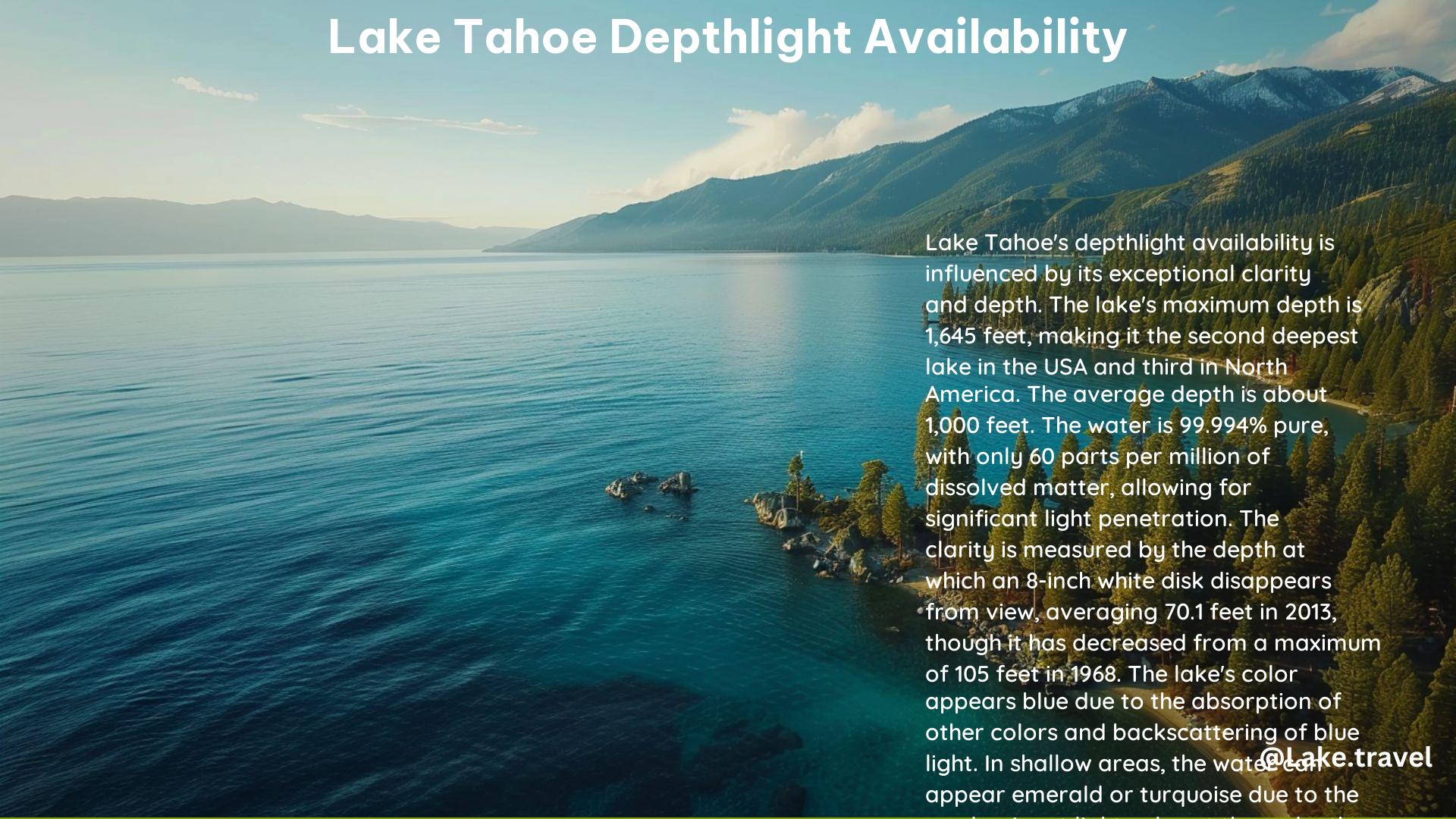Lake Tahoe is renowned for its exceptional depth and unparalleled clarity, which create a unique and captivating underwater world. As a lakes touring enthusiast, understanding the depth and light availability of this iconic body of water is crucial to fully appreciating its natural beauty and diverse ecosystem.
The Remarkable Depth of Lake Tahoe
Lake Tahoe’s depth is truly remarkable, with a maximum depth of 1,645 feet (501 meters) in Crystal Bay, making it the second deepest lake in the United States, the third deepest in North America, and the 11th deepest in the world. The average depth of the lake is approximately 1,000 feet (305 meters), adding to its impressive scale and volume.
| Depth Comparison | Feet | Meters |
|---|---|---|
| Maximum Depth of Lake Tahoe | 1,645 | 501 |
| Average Depth of Lake Tahoe | 1,000 | 305 |
| Depth of Crater Lake (Oregon) | 1,943 | 592 |
| Depth of Great Slave Lake (Canada) | 2,015 | 614 |
| Depth of Lake Baikal (Siberia) | 5,387 | 1,642 |
The Captivating Clarity of Lake Tahoe

Lake Tahoe’s clarity is truly remarkable, with a water purity of 99.994%. This exceptional clarity is primarily due to the lake’s exceptional depth and volume, as well as its relatively small watershed and favorable climatological conditions. The clarity of the lake is measured by the depth at which an 8-inch diameter white disk disappears from view, known as the Secchi depth.
The clarity of Lake Tahoe is further enhanced by the way light interacts with the water. As light penetrates the lake, water molecules absorb various colors, with the predominant blue light being scattered back towards the observer’s eye. This is why the lake appears to have a stunning blue hue, as other colors in the light spectrum are absorbed at deeper depths.
However, the clarity of Lake Tahoe has been impacted by environmental factors over the years, such as the growth of algae, particularly Cyclotella gordonensis, which can scatter light and reduce clarity. Additionally, fine inorganic particles and air pollution have contributed to a decline in clarity over recent decades.
Efforts to Preserve Lake Tahoe’s Clarity
Recognizing the importance of maintaining Lake Tahoe’s exceptional clarity, various conservation efforts have been undertaken to protect the delicate watershed and reverse the trend of declining clarity. These efforts involve federal, state, and local actions to reduce erosion, runoff, and other factors that can impact the lake’s natural filtering ability.
By understanding the depth and light availability of Lake Tahoe, lakes touring enthusiasts can better appreciate the unique and captivating underwater world that this iconic body of water offers. Whether you’re exploring the depths through scuba diving or simply admiring the stunning blue hues from the shore, the depth and clarity of Lake Tahoe are sure to leave a lasting impression.
